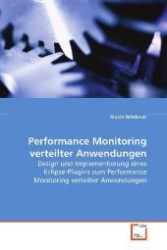Full Description
This Springer Brief focuses on the use of artificial intelligence (AI) in geosciences and reservoir engineering. This concise yet comprehensive work explores how AI-driven proxy models can effectively tackle the computational challenges associated with reservoir simulations, history matching, production optimization, and uncertainty analysis.
In reservoir engineering, a key challenge is reproducing observed production and pressure data using forward simulation models, known as reservoir simulators. However, the inverse problem of history matching requires running hundreds of simulations, each demanding significant computational resources. Full-scale reservoir simulators are often too time-consuming, making proxy models—such as second-order polynomials, kriging, and artificial neural networks (ANN)—essential alternatives.
This Springer Brief emphasizes the power of AI, particularly ANN, as the most pragmatic approach for addressing real-world reservoir engineering problems. ANN has already gained widespread acceptance in computationally intensive fields such as aerospace, defense, and security due to its ability to model nonlinearities. Given the highly nonlinear nature of reservoir simulations, this book demonstrates how artificial neural networks-based proxies provide efficient and accurate solutions.
To illustrate these concepts, the methodology is applied to a synthetic field inspired by real-world data: the Brugge field dataset. This widely used open-source dataset enables practitioners to familiarize themselves with AI-driven workflows in reservoir simulation. The Brief covers key applications, including history matching, production optimization (e.g., well placement and production rates), and uncertainty analysis, with detailed explanations of the workflows for each case.
This Brief offers high-quality scientific content aligned with international research standards. It is now available in both print and digital formats.
Contents
Methodology to Build an Artificial Neural Network for Reservoir Engineering Problems.- Artificial Neural Networks for Reservoir Engineering Problems.- Application to these Advanced Workflows to the Brugge Field Case.- Description of the Brugge Fiel.







